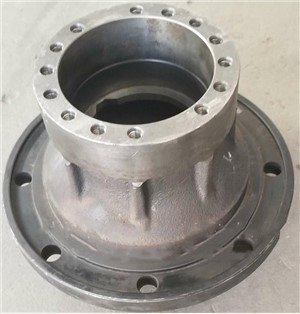Understanding Vehicle VIN Meaning: A Comprehensive Guide
Introduction
Every vehicle on the road has a unique identifier known as the Vehicle Identification Number (VIN). This alphanumeric string serves as the vehicle’s fingerprint, providing information about its make, model, year of manufacture, and much more. In this article, we will delve deep into the meaning of VINs, breaking down each component, explaining its significance, and offering practical tips for decoding VINs for car buyers, owners, and enthusiasts alike.
What is a VIN?
The Vehicle Identification Number, or VIN, is a 17-character code that is unique to each vehicle. It serves various purposes, ranging from tracking the vehicle’s history to ensuring its compliance with safety standards. The VIN provides critical information useful to buyers and sellers alike.
History and Purpose of the VIN
The concept of a VIN was introduced in 1954, but it wasn’t until 1981 that the standardized 17-character format was established. The Uniform Vehicle Code (UVC) was crafted to ensure vehicles could be uniquely identified across different jurisdictions. The primary purposes of a VIN include:
- Identifying the vehicle’s manufacturer
- Collection of insurance and registration data
- Tracking vehicle history (accidents, thefts, repairs)
Breaking Down the VIN Structure

A VIN comprises three main sections: WMI (World Manufacturer Identifier), VDS (Vehicle Descriptor Section), and VIS (Vehicle Identifier Section). Each section provides specific information about the vehicle.

1. World Manufacturer Identifier (WMI)
The first three characters of the VIN, known as the WMI, reveal the manufacturer and country of origin. For example:
| WMI Code | Manufacturer |
|---|---|
| 1HG | Honda (USA) |
| WVW | Volkswagen (Germany) |
| 2FZ | Ford (Canada) |
2. Vehicle Descriptor Section (VDS)
The next six characters (positions 4-9) make up the VDS. This segment provides information about the model, body style, engine type, and any safety features. Each manufacturer has its own specific coding system. For instance, a “1” in the fifth position may indicate a sedan, while a “2” may indicate an SUV.
3. Vehicle Identifier Section (VIS)
The last eight characters, known as the VIS, contain details about the individual vehicle. The 10th character indicates the model year (e.g., ‘A’ for 1980, ‘B’ for 1981, ‘C’ for 1982, and so on). The 11th character represents the manufacturing plant, while the last six characters (12-17) serve as a unique identifier for the specific vehicle.
How to Locate Your Vehicle VIN
Finding your vehicle’s VIN is essential for numerous tasks like registration, insurance, and resale. Here are common locations where you can find the VIN:
- On the driver’s side dashboard (visible through the windshield)
- On the driver’s side door frame (often on a sticker)
- In the engine bay (mounted on the firewall)
- On your vehicle registration or insurance documents
Common Myths About VINs
Several misconceptions surround VINs that can lead to confusion:
Myth 1: VINs are the same for all vehicles

Every vehicle has a unique VIN. No two vehicles in the world share the same VIN.
Myth 2: VIN can be easily forged
While it’s possible to alter a VIN, doing so is illegal and easily detectable through vehicle history checks.
Myth 3: Older cars don’t have a VIN
While the standard 17-character VIN was introduced in 1981, older vehicles will have a VIN, but it may consist of fewer characters.
How to Decode a VIN
Decoding a VIN can be done using various online tools or through reference books. Here’s a step-by-step approach to manually decode a VIN:
- Identify the WMI and determine the manufacturer.
- Refer to the manufacturer’s specific coding for the VDS.
- Check the VIS for the model year and unique identifier.
For example, consider the VIN: 1HGCM82633A123456. Here, “1HG” identifies Honda, “CM8263” describes the model and style, “3” indicates 2003 as the model year, and “A123456” is the unique vehicle identifier.
Importance of VIN in Vehicle Transactions
When buying or selling a vehicle, the VIN plays a critical role. Here’s how:
1. Verifying Vehicle History
Using the VIN, potential buyers can access vehicle history reports that disclose past accidents, repairs, and ownership changes.
2. Ensuring Authenticity
A VIN allows buyers to confirm that the vehicle is as described. Buyers should check the VIN on various parts of the vehicle to ensure they match.
3. Insurance and Registration
Insurance companies require the VIN for policy setup and coverage. Additionally, vehicle registration with your state also necessitates a VIN.
Practical Tips for Using Your VIN
- Always verify the VIN during a vehicle purchase.
- Keep the VIN handy for insurance and registration documents.
- Run a history check using the VIN before buying a used vehicle.
- Learn how to spot a tampered VIN to avoid scams.
FAQs about Vehicle VIN Meaning
1. What does VIN stand for?
VIN stands for Vehicle Identification Number, a unique code assigned to every motor vehicle.
2. How long is a VIN?
A VIN is always 17 characters long in its standardized form.
3. Can I use the VIN to check a vehicle’s history?
Yes, by using the VIN, you can obtain vehicle history reports from services like Carfax or AutoCheck.
4. How can I find my VIN if it’s not visible?
If you can’t see your VIN on the dashboard or door frame, check your vehicle title, registration, and insurance documents.
5. What should I do if my VIN is damaged?
If your VIN plate is damaged, contact your vehicle manufacturer or a local dealer for assistance in obtaining a replacement VIN.
6. Can I change my VIN?
Changing a VIN is illegal in most places, and altering it can result in severe legal consequences.
